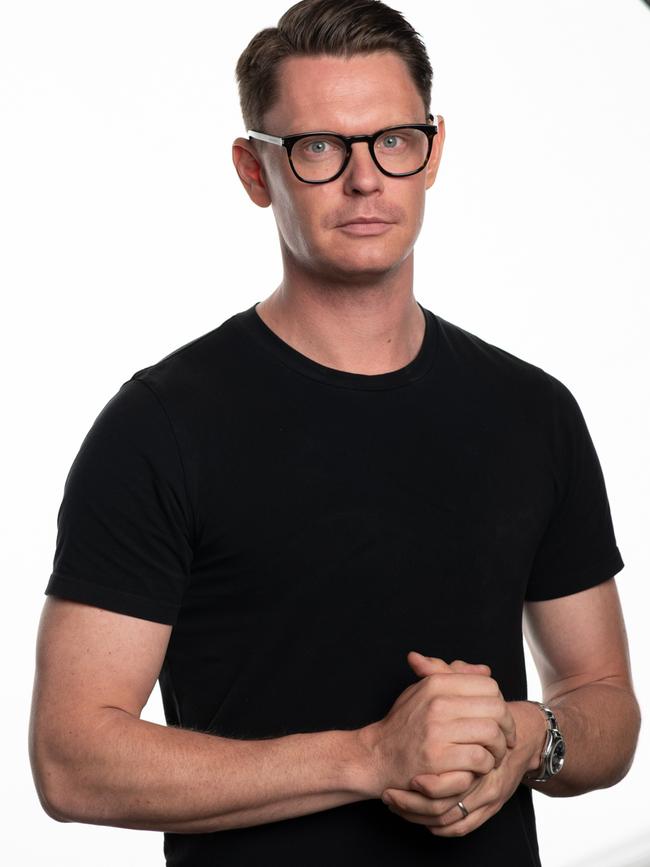Klarna chief marketing officer David Sandstrom on rebellious marketing, market saturation and creativity
If you are going to “pick a fight” to disrupt an industry, make sure you have the right product and brand authenticity.

Armed with a “rebellious marketing” strategy and mission to smash toxic and predatory credit perceptions around banking, top marketer of buy now, pay later (BNPL) business Klarna said bold and industry-shaking marketing tactics do not suit all.
The 2005-Swedish-founded global retail bank, payments, and shopping service, which only launched in Australia in January 2020 – despite Aussie internet sensation Celeste Barber fronting its international ad campaign in 2019 – surpassed a million app downloads in Australia in September this year.
Having opted to ditch the traditional banking style of marketing by creating more garish and quirky ad campaigns featuring humour and celebrity influencers, global chief marketing officer (CMO) David Sandstrom said it was this type of marketing that made it stand out.
“In a lot of countries banks and financial institutions are the most distrusted and most hated in the world. They’ve screwed people over for generations, both big banks and credit card companies and they all look the same,” Stockholm-based Mr Sandstrom explained.
“We were very similar to everyone else in the financial industry; we were blue, we were male, we were quite boring and stiff and bureaucratic, but about five years ago, from a marketing perspective we decided to make a huge shift.”

Knowing the brand could no longer look this way, Mr Sandstrom said it had to break the recipe for how to create a financial brand, to stray away from those norms and begin trying to combine creativity and finance.
“We thought, what happens if we go pink instead of blue, if we have a completely different tone of voice? If we try different media outlets, different ambassadors and just, you know, break the rules,” he said. “Since we knew that banks were hated, I did everything in my power not to look like a bank. We’ve put a lot of effort into marketing and invested heavily into the brand and it has been paying off well.”
While five years ago that worked well, and the banks themselves are now following a similar playbook, back then Mr Sandstrom said it was “revolutionary” and helped cement the brand – as it closes in on 100 million consumers globally.
While the marketing strategy has been successful and locally it rolled out three campaigns in the last year, two with its current creative agency Thinkerbell and one with Bring, Mr Sandstrom said brands can’t be renegades just for the sake of it.
“We have been rebellious in the name of the consumer, for the generations that have been screwed over by credit card companies and big banks, student loans and credit card debt and through toxic predatory credit,” he said.
“We were coming in and being rebellious against someone that people already disliked, and coming up with a better and smarter solution in the name of the consumer which makes a lot of sense.”
He said as a brand or entering an industry you can’t “pick a fight” to stand out in marketing without the right product and authenticity as consumers are now too educated. “It’s not so much the marketing strategy that is rebellious, but the product, with the marketing strategy amplifying that,” he said.
“That is where I see other companies go wrong, where they have a completely bland product that really doesn’t solve anything. And just in order to spark some kind of conversation and attention they add a rebellious marketing strategy on top of something that isn’t really rebellious. That just feels fake and unauthentic.”

Describing its moves as more of an anti-strategy that comes from within, Mr Sandstrom, who has worked at media agency Carat Sweden and was chief executive and partner at DDB Stockholm, said its marketing tactics around creating attention through friction had changed and he viewed the fintech business as now “coming of age”.
With the likes of Afterpay, Zip and more than 10 other BNPL brands in market, he describes the Australian market as crowded, particularly when compared to the US, where it’s about standing out against credit cards, and in Europe, where it’s more about standing out against old banks.
“It’s a very oversaturated market so it’s much more about standing out in a sea of sameness,” he said. “The bar is set very, very high for consumers to give a fintech company, two seconds, 10 seconds or 10 minutes of their time. It‘s extremely high and marketers continuously underestimate that.”
Describing its product as the “crown jewel”, he said even if you had a vastly superior product to competitors, if no one listens to that proposition it doesn’t matter. This is where balancing out buying media attention – which he said is all too easy for the big brands such as Coke and P&G – by instead being smart creatively.
“Creativity is not everything here at Klarna as the product itself is, but creativity has played a huge role in turning the intimate spotlight towards the product for a couple of seconds or for a couple of minutes so that people actually listen to it, he said.
“There are so many great products out there that no one will ever pay attention to and I do not want to end up in that box.”
With plans to be present in more than 30 markets by the end of the year, in 14 languages and a new ad campaign dropping later this week in Australia, Mr Sandstrom said he’s still adapting his leadership style to cover the expanse of new markets.
With an eight-strong marketing team in Australia and both creative and media partners sitting with independent agencies Down Under, Mr Sandstrom said one of his biggest challenges involves scalability, advancing the role of automation in relation to creating and distributing that content and keeping that fine balance between global and bespoke regional marketing endeavours.
“Payments, money and trust, at the core of it is very local which is why there’s a reason there are no big global consumer banks. We have to balance being hyper targeted and locally relevant with the global competition we face when it comes to content and attention,” he added.
Mr Sandstrom said he also wanted to find new ways and new partners to diversify, beyond the monopolistic duo of Facebook and Google; was pleased with its martech direction as it over invested in a tech stack early on to ensure it was ahead of the game; and was eyeing the new merging of entertainment and shopping as a key area of focus.


